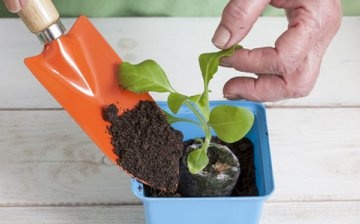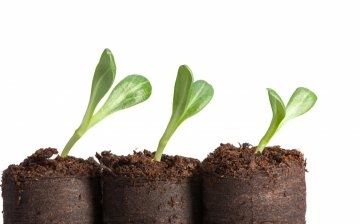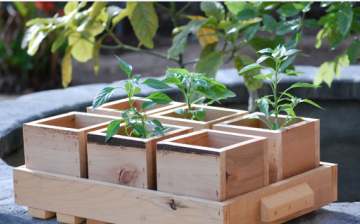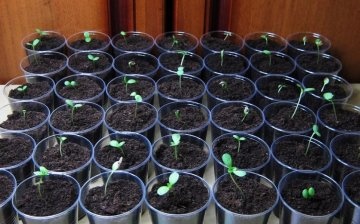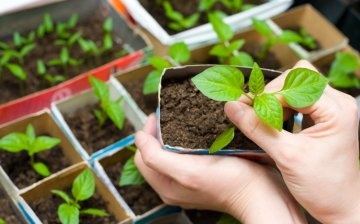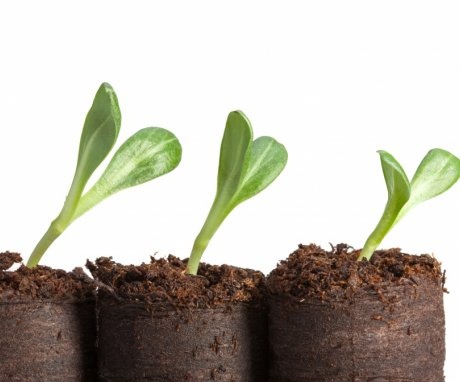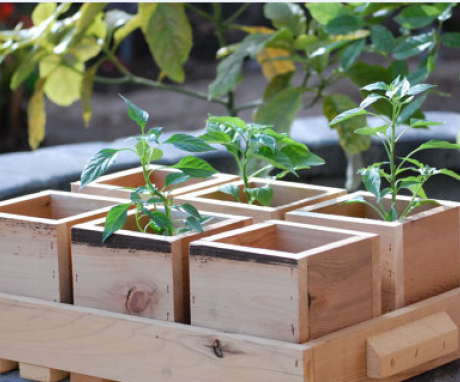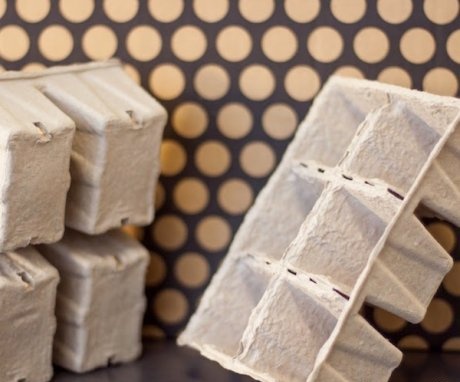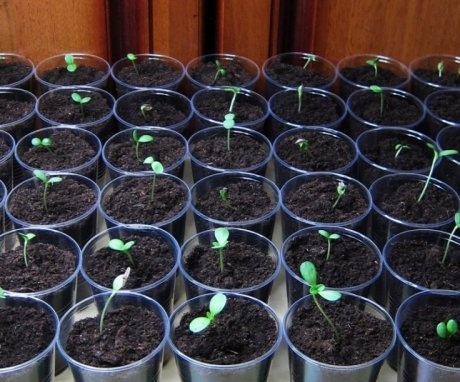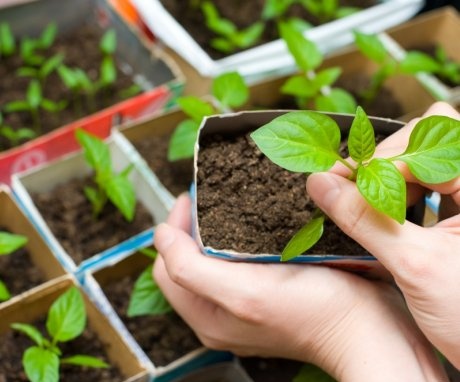The best containers for seedlings - help in choosing a gardener
Vegetable cultivation always starts with seedlings... We have to sacrifice the beauty of the home interior and place all kinds of containers on the windowsills. However, now there is a large selection of seedling containers that do not spoil the appearance of rooms and windows. They are compact and quite exotic fit into the interior.
Moreover, modern containers meet all the requirements for growing plants, they are convenient, comfortable and practical when transporting to a personal plot. It remains only to make the right choice and know all the nuances of this or that type of container. Any gardener will prefer small and handy containers that do not need to be stockpiled after planting season. Such containers are considered the most practical and are called peat tablets... In addition to them, there are other types of containers, no less convenient and effective. All of these species will be discussed in this short horticultural guide.
Content
- Peat tablets - a convenient "home" for seedlings
- Wooden boxes are another solution for planting seedlings
- Seedling cassettes and their types
- Plastic cups - gardeners' favorites
- Alternatives to purchased containers
Peat tablets - a convenient "home" for seedlings
This kind of container for seedlings is gaining more and more confidence from gardeners. Tablets are very convenient, as they take up little space on the windowsill and look very impressive. Seeds germinate in them quickly, the plants feel great right up to planting in the ground.
Description of peat tablets:
- Peat tablet consists of several types of peat, pressed and impregnated with growth stimulants.
- The container looks like a small tablet.
- It is clothed in a special "living" shell, which decomposes when it gets into the ground. Keep in mind that the composition of the tablet in the soil takes a long time to decompose.
- Peat pot-tablet is covered with a special paper mesh impregnated with fungicides... Depending on the type of tablet, the mesh may be absent. Such containers are slightly cheaper.
- The composition of the tablet itself also differs, mainly in the acidity of the peat. It is affixed to the tablet packaging. Therefore, be careful when choosing containers and buy exactly what you need. The acidity of the substrate for a tomato will be different than, for example, for coniferous crops. The acidity index can be found on each tablet, it is indicated on the package.
- Each container must be packed separately. If the tablets are sold in bulk, without specifying all the initial data, then you are probably facing a fake. Be careful when buying.
The container is very easy to use. The tablet should be immersed in a small container and gradually filled with warm, settled water. It will begin to swell and rise. There is a small depression in the container, a seed is planted in it, either covered with earth, or left on the surface, depending on the type of plant.
According to gardeners, peat tablets do an excellent job.
Seeds sprout amicably and grow rapidly.However, there are also sad cases. Many acquire a fake and pay off with dead seedlings. The fact is that the mesh of such containers is not made of paper, but of another cheap material. When it gets into the ground, it does not decompose and does not allow the plant to develop. As a result, the seedlings die. In this regard, be careful and purchase containers only from trusted companies. Remember that each tablet must be packaged and labeled, the composition and acidity must be indicated.
With a similar composition, containers are also produced in the form of cups, cubes and other shapes. The principle of operation is the same here. The container together with the plant is planted in the ground, the container decomposes in the soil. Often peat cups, tablets or cubes are used for picks... It is convenient to plant an already grown seedling in them.
Wooden boxes are another solution for planting seedlings
This type of container for seedlings known to everyone for a long time. It is very convenient and can be quickly put together from scrap materials - unnecessary trimming of boards or plywood. The bottom of the container is lined with foil and filled with the substrate necessary for seedling.
The beauty of the boxes is that the gardener himself can vary its size depending on the location of the seedlings - a window sill or a table. Out of the box easily dive plants and replant them, for example, in peat pots, tablets or cubes.
After use, it is advisable to dry the container well in the fresh air and put it in a dark, dry place until the next season.
Many gardeners treat containers with special antibacterial wood lubricants. So the box will serve no season. Some gardeners put peat pots in boxes and cover them with plastic wrap. It is more convenient for them to grow seedlings. You can think of many options for using a wooden box, it has always been and will be the most affordable container for seedlings.
Seedling cassettes and their types
Peat cassettes. This type of containers for seedlings will appeal to those who have a personal plot far from home, the seedlings have to be transported in transport or by car. Often such an event is a lot of trouble, you want to transport seedlings in convenient and lightweight containers. They are cassettes made from various materials. One of the most popular types of cassettes is a peat container. The cassette is a platform made up of many small plant openings. In appearance, the container is compared to an egg container. Its convenience lies in the fact that it is very light and accommodates a large number of seedlings. It is convenient to transport it.
Peat cassette "works" in the same way as peat cups or tablets:
- The substrate is poured into the container and one or two seeds are planted.
- It is very important to monitor the moisture content of the cassette. Remember that the natural material should not dry out, otherwise the plant will quickly die.
- Peat, cardboard and humus do not hold moisture well, so you should often water the seedlings or carry out spraying pots, cassettes or tablets. But the container should not be poured either - rot will appear, young shoots may again die.
- Peat cassettes are very convenient in that they will not break or crack when compared to plastic. They can be planted with the plant without damaging root system... The desired cell is simply broken off from the cassette.
Plastic cassettes. Containers in the form of cassettes are also made of artificial materials. The most reliable are polystyrene and polypropylene. The first is considered a safer material for both seedlingsand for a person. However, it also has such a disadvantage as fragility. Therefore, you have to carefully and carefully handle such a cassette. Polypropylene is a more resilient material and is also suitable for horticultural purposes. Such troubles as cracks or fractures will no longer happen to them.
It is preferable to purchase a container made of terracotta polypropylene.
Cassettes made of polyvinyl chloride (PVC) are not recommended for use, since the material has a negative effect on humans and plants. The use of cassettes is simple:
- The containers are filled with the desired substrate.
- One or two seeds are planted in it.
- Plastic cassettes are also good because they keep moisture longer, which cannot be said about natural material - peat, cardboard.
- Peat pots or tablets should not be overdried, in which case the seedling will quickly die. In a plastic container, this will not happen, the material holds water better and longer.
According to gardeners, the best option would be plastic cassettes made of polystyrene. They are very convenient, easy to store and transport to your garden plot.
Plastic cups - gardeners' favorites
Another favorite container for seedlings gardeners are plastic cups. They can be purchased at any store specifically for seedlings, as well as simple, ordinary drinking cups. At the bottom of the seedling container, as a rule, there are already holes for draining excess water. When it comes to simple drinking glasses, gardeners make their own.
The containers are used for those types of crops, the seeds of which are easy to plant one at a time, for example, tomato... The material for the container is often polypropylene. It is safe for both plants and humans. The containers are easy to store and transport. Usually the cups are placed in wooden boxes and transported to the infield. Seedlings are carefully shaken out together with an earthen clod and planted in open ground.
The plastic holds moisture well, the earth does not stick to the walls of the cup, which allows you to shake out the substrate and transplant the plant without any problems.
Then the containers are washed, dried and put away in a dark place until the next season. Any plastic container must be treated with a weak solution of potassium permanganate for disinfection. Natural materials, if not already processed by the manufacturer, are steamed or treated with fungicides. All these measures help to disinfect the composition of the containers and prevent the appearance of blackleg, which often happens with seedlings.
Alternatives to purchased containers
Popular homemade seedling containers:
- Very often you can see edged boxes of milk, fermented baked milk and other dairy products on the windowsills. They are planted in seedlings... This option is considered the most optimal if it is not possible to purchase a special container for seedlings. However, it is worth remembering that holes in the bottom should be made in such cups. Otherwise, the seedlings may die due to the appearance of root rot, which often happens when using milk cartons. This container does not allow air to pass through and retains water for a long time. Therefore it is imperative to make holes.
- Many people make cups out of regular film. This option is not very convenient when transporting to a personal plot. Therefore, it is recommended for those who live next to the vegetable garden. The cups are placed in a wooden box, leaning against each other so that they do not fall over. The option is convenient because transplant seedlings are easy. The film is cut or simply laid out without any damage to the plant root system.
- Many gardeners build containers from cardboard or use regular jars.
- Someone grows seedlings in cans. When choosing an alternative, always consider the comfort of the plant and its compatibility with the container material.
- It is very easy to build a container with your own hands. A variety of materials are used from newspapers to wood. Everything is only limited by the gardener's imagination.
Seedling containers are selected depending on the type of plant. That is, you need to take into account the fact whether there will be dive seedlings or not.If not, cups, tablets, or cubes will do. If picking is necessary, gardeners use wooden boxes or ordinary plastic containers and then plant the seedlings in separate cups. When choosing a container, consider all the nuances and features indicated in this short horticultural material. Good luck with growing seedlings!
More information can be found in the video.



